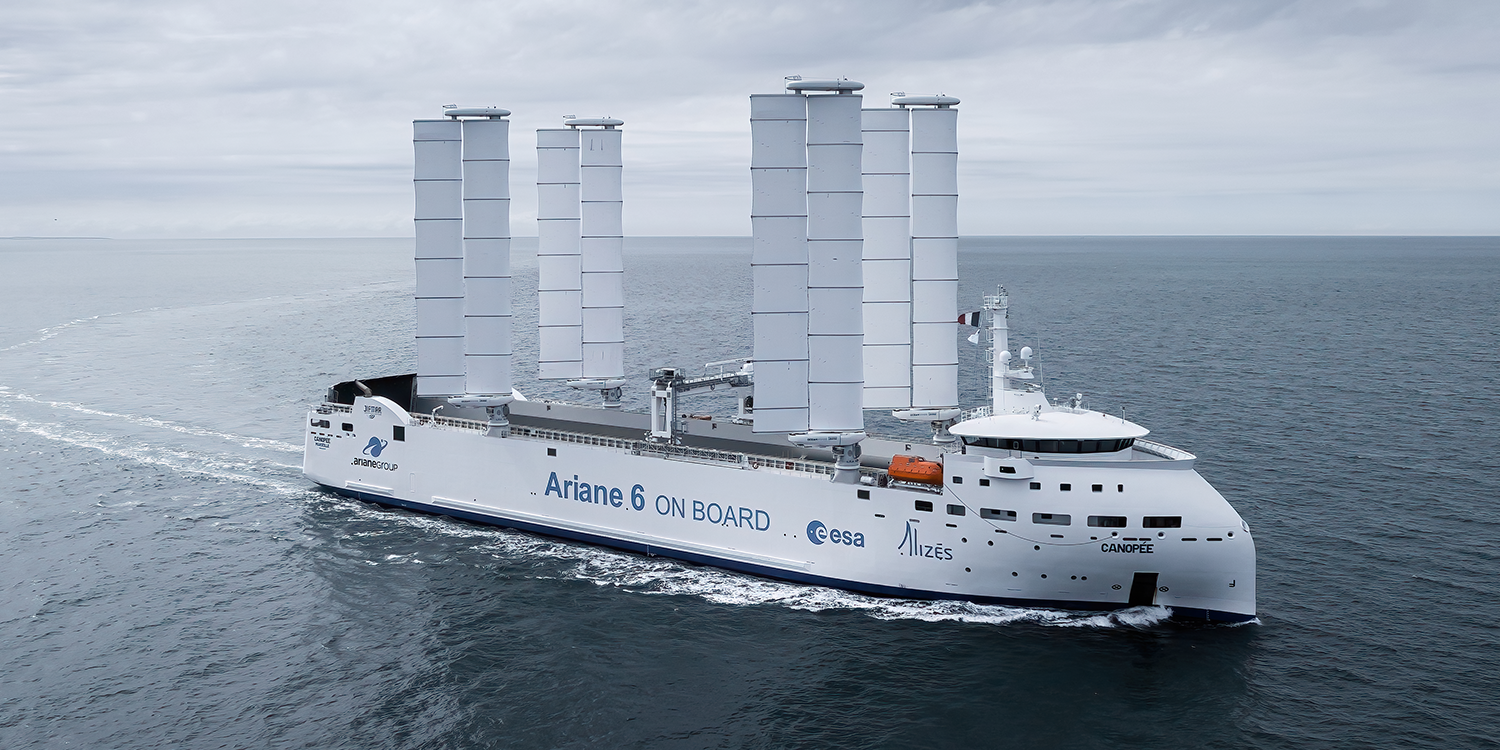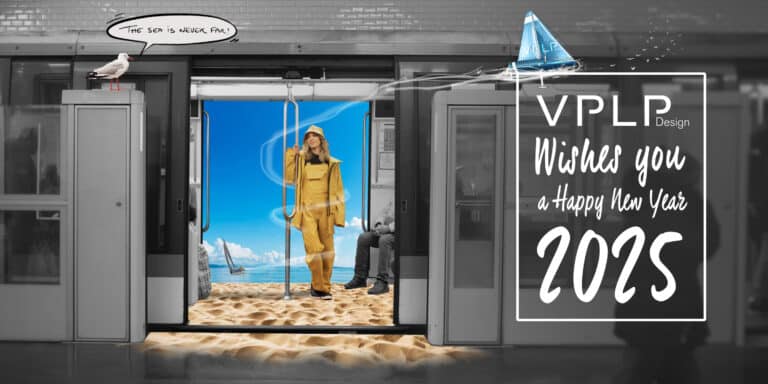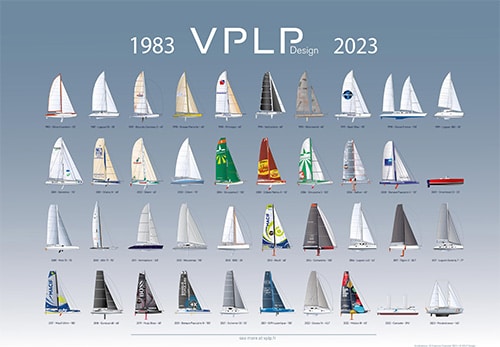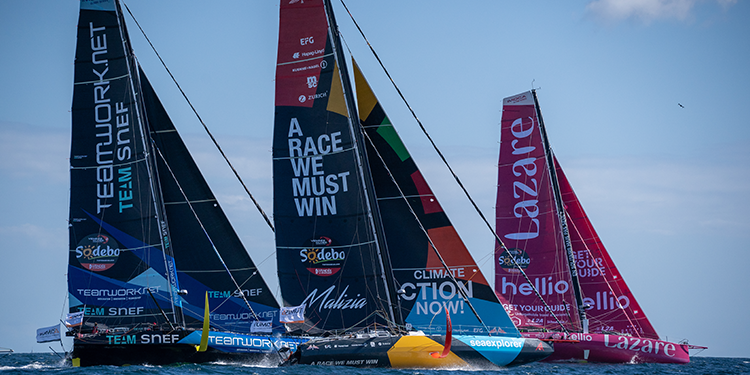Canopée, a cargo ship designed by VPLP Design for transporting sections of the Ariane 6 rocket, had her official launching ceremony on 5 October in Bordeaux and is now getting ready to start sailing between ports in Europe and French Guiana. Her magnificent wing sails were fitted in late August. This innovative vessel has been a catalyst for several other VPLP projects whose ultimate aim is to contribute to the decarbonization of sea transportation.
Reviving wind propulsion as a way of decarbonizing shipping through the development of a simple wingsail, which is automatic and furlable, has been occupying the minds of architects at VPLP Design since 2010, the year BMW Oracle Racing’s challenge for the 33rd America’s Cup claimed victory with USA 17. This VPLP-designed trimaran featured a very original rig centred on an immense, 68-metre rigid wing. USA 17’s success established a new direction for the firm which, in the words of its co-founder Marc Van Peteghem, aimed to “transfer this technology to the shipping industry”.
In 2018 the Ariane Group called for tenders to transport parts of the Ariane 6 rocket from ports in Europe to Kourou, French Guiana. VPLP drew up a preliminary project centred on a RORO vessel rigged with Oceanwings wingsails (363 m²), also developed by the firm, and ran simulations on the potential fuel savings. The shipping company Zéphyr & Borée subsequently joined the project, bringing to the table its expertise in order to adapt the design to the specific constraints of carrying the Ariane 6. Jifmar and Zéphyr & Borée joined forces to establish the Alizés shipping company, which then tendered the winning proposal. Jifmar Guyane will become the shipowner.
Launched in late June 2022, the vessel has to comply with considerable technical constraints, such as the transport of fragile and dangerous loads, and is currently undergoing trials at the Breton port of Brest. She was officially named on Thursday 5 October at Bordeaux and is scheduled to start sailing for French Guiana in the autumn. “With this project, VPLP Design has added an extra string to its bow,” says Marc Van Peteghem. “And while there are indeed more and more companies developing sail-based solutions for the shipping sector, Canopée is different in that we really worked on her lines to enhance their hydrodynamic efficiency and suitability to wingsail propulsion.”
Technology Transfer
For VPLP Design Canopée has been a “founding project” in the sense that it launched the firm’s activities in decarbonized shipping under sail. Several projects have followed in its wake, such as Trade Wings 2500, a container-ship project focusing on shipping between subsidiary ports in Europe. Simon Watin, VPLP Managing Partner and head of the firm’s Maritime Division, explains the concept: “Hybrid propulsion comprising six Oceanwings wingsails, two electric motors and lower-emission fuels such as e-methanol, reducing CO2 by about 35% on a typical Atlantic crossing.”
VPLP Design has exploited other technologies developed in offshore racing (previously the firm’s core business) to accelerate the energy transition in the shipping sector. For example, all three versions of the Fast Foiling Ferry (F3) exploit the benefits of foils to reduce fuel consumption by approximately 40%. A 24-metre version designed to carry 220 passengers around urban environments is currently being brought to market. Simon Watin gives another example: “We drew on our experience in multihull ocean racing to design the hull, determine the platform’s geometry and study the sea-keeping qualities of the sailing freighter Vela. This 65-metre trimaran is designed to carry goods between Europe and the USA, and satisfies all the requirements of a working vessel while at the same time being very fast.”
Also following in the wake of the Canopée, Persévérance is a supply ship designed for the Polar Pod expedition, the future drifting oceanographic research station devised by French explorer Jean-Louis Etienne. She launched in Vietnam in the summer. “Resulting from a collaboration between Olivier Petit, the architect behind Antarctica (now Tara), this ship features a reinforced hull, special rigging for extreme conditions, and a launching ramp for the deployment of light auxiliary craft,” says Simon Watin, head of VPLP’s Maritime Division. “The challenge in all these projects is to find a balance between innovation, development costs and return on investment. The idea isn’t to create a concept boat. We are aiming for a vessel which has a realistic opportunity of being competitive on certain commercial routes.” Canopée is leading the way…






